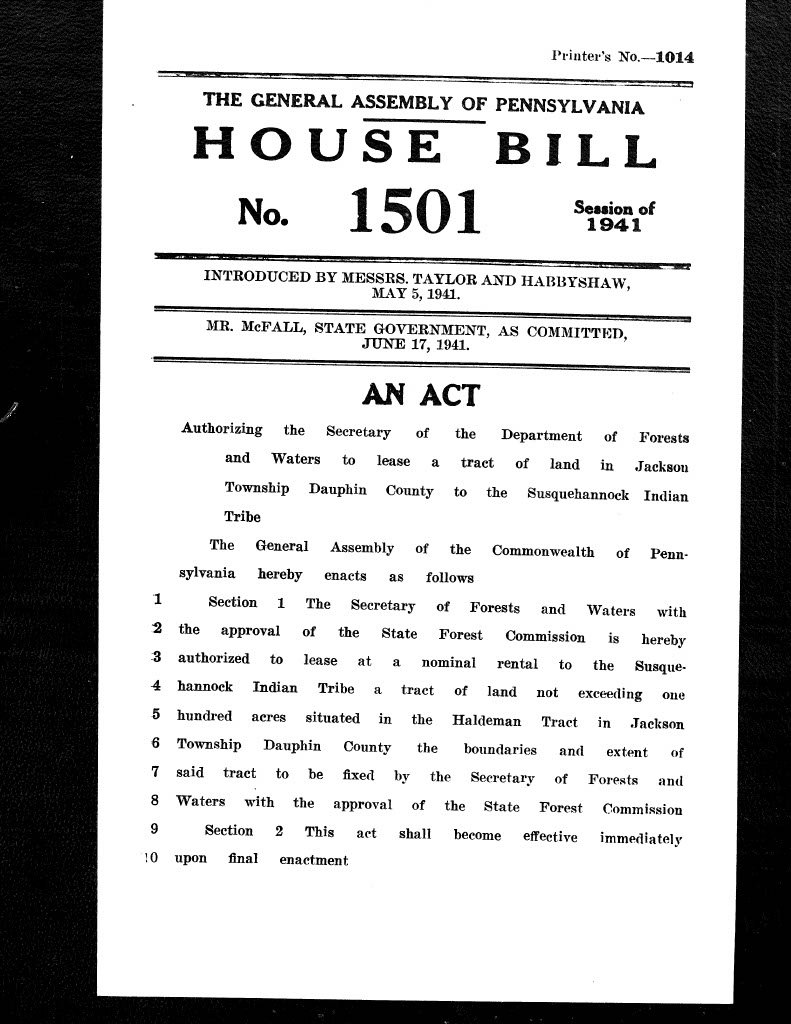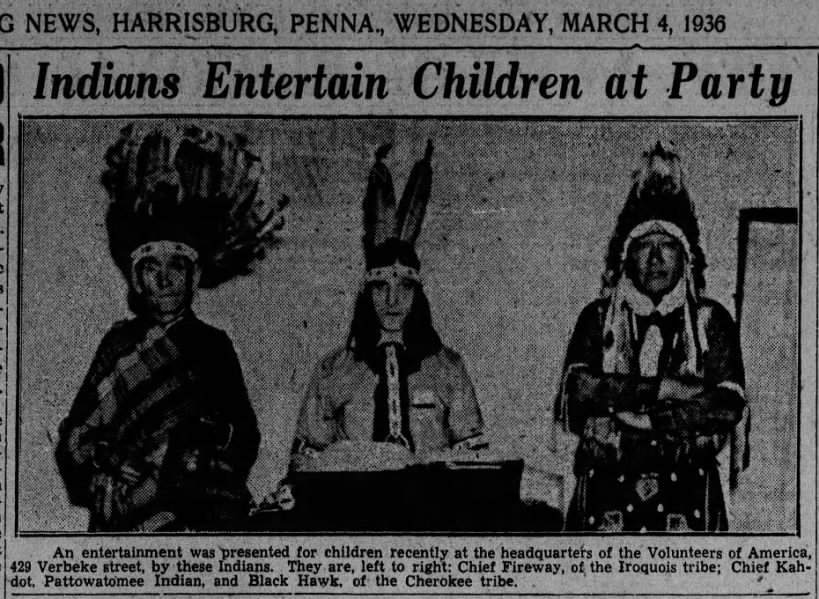In the 1940s, efforts at recognition were revitalized with the contributions of Chief Fireway, a man who claimed to be the last chief of the Susquehannock and who led the efforts to recognize the survivors that remained. Fireway was born Harry Andrew Wetzel in 1899, and had distant ancestry claims to Jacob Young, an early Indian trader who was so strongly believed to have had a Susquehannock wife that he was criminally investigated for supporting the Susquehannock people in early colonial history.
While Fireway would not be considered eligible for enrollment based on today’s enrollment standards due to a lack of evidence that Jacob Young’s children were Susquehannock, he did successfully lobby to recognize the tribe in the state of Pennsylvania. His outspoken and visible advocacy combined with his local connections and the efforts of 80-100 other Conestoga-Susquehannock descendants were successful. These other descendants included members of the Jackson, Benson, Hicks and other families who opted to seek out land in neighboring Dauphin county in lieu of the return of their land in Lancaster. This was decided in light of the failure of previous efforts at the federal level to return the land in Lancaster. Under this arrangement, the tribe would have leased land from the state, which was hardly ownership, but a more agreeable compromise that would allow some semblance of tribal identity to be maintained.
In 1941 the Pennsylvania state legislature voted to pass the Susquehannock Indian Reservation bill unopposed, which would have established a reservation for the remaining Susquehannock in Dauphin county, Pennsylvania. However, our people would be denied justice yet again when Pennsylvania governor Arthur James vetoed the bill, citing the age-old myth that the Conestoga Susquehannock were extinct. Arthur James would veto nearly every historical preservation measure that would come by his office. This controversial bill was divisive, and its veto lead to widespread ridicule of the tribe by local politicians who saw this merely as a political stunt. These racist attitudes continued well into the 1950’s, including articles outright defending the death and cultural loss of Susquehannock people.
Gallery:
To this day, Chief Fireway remains a controversial figure in the tribe’s history. While his claims of Susquehannock ancestry may have been potentially accurate, there were many inaccuracies in his life story, including the claim that he attended Carlisle Indian School. While many people falsley claim to be descended from survivors of Indian boarding schools it is a highly offensive claim, and extremely easy to verify. Whether these claims were made by himself or by reporters in an effort to sensationalize the story, there are many things stated in news articles around Chief Fireway that are patently false. Nonetheless, his ability to appeal to and connect with white leadership in the state of Pennsylvania lead to a massive victory for the rights of the tribe as a whole, and this collective victory sealed yet another legally documented attempt at recognition into the historical record, proving not only that the tribe had survived in ancestry, but also in political organization.
A note of support in a 1941 newspaper following the veto of the Susquehannock Indian Reservation bill
A 1950's article justifying the death of the Susquehannock people
Chief Fireway, on the far left, was frequently involved in fairs and entertainment, which was a common way for Native Americans to make money at the time.
A news article detailing the veto of the Susquehannock Indian reservation Bill





